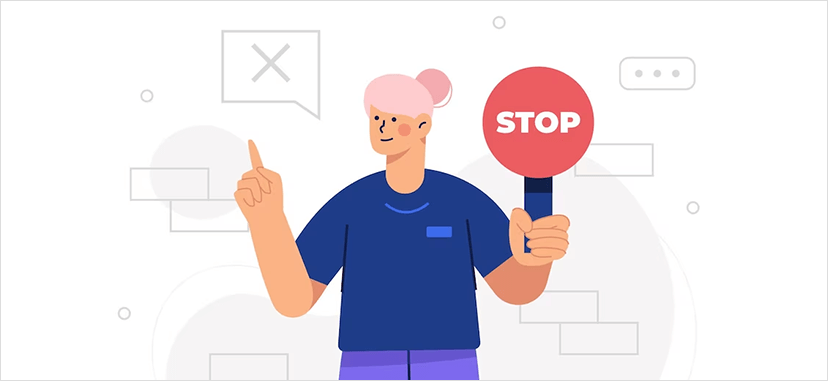
Click the button to start reading
Why Understanding Your Target Audience Is Critical to Business Success
Picture this: your business is booming, products and services are flying off the shelves, and your marketing efforts are driving exceptional results. It’s like a dream come true, and you can’t help but pinch yourself to make sure you’re not dreaming. The good news is that this dream can become a reality when you truly understand your target audience.
In this article, we’ll explain why that is, give you some pointers on how you can identify your target audience, provide examples of companies that excel in this arena, and help you avoid some common pitfalls, so you can derive the biggest benefits from your target audience.
To get started, let’s dig right in by first identifying what a target audience is and why they’re so darn important!

What Is a Target Audience and Why It Matters
Before we delve into the specifics of target audiences, let’s first take a moment to define the concept itself, so we’re all on the same page.
Definition of target audience
So, what exactly is a target audience? Simply put, your target audience is a group of people who are most likely to buy your products or services. They’re the reason you’re in business, and the folks you’re dying to impress with your fantastic offerings.
It’s like dating: you’re looking for that special someone who’s the perfect match for you, except in this case, it’s a whole group of people who are going to fall head over heels for your products or services.
The role of target audience in business strategy
Knowing your target audience is like having a secret weapon that helps you fine-tune your business strategy. It allows you to cater to their needs, preferences, and desires, increasing the chances that they’ll choose you over your competitors. Once you understand who your target audience is, you’re in a much better position to (successfully!) market your products and services.
Benefits of understanding your target audience
Unraveling the mysteries of your target audience can reveal a treasure trove of advantages that propel your business towards success. Let’s dive into 7 big benefits that await when you truly grasp the essence of your audience:
- Laser-focused product development: When you know your audience like the back of your hand, you can craft products or services that hit their sweet spot, addressing their needs, desires, and pain points. By meeting (and even exceeding) your audience’s expectations, you’ll fuel your likelihood of market success.
- Marketing that hits home: By grasping your audience’s preferences, habits, and motivations, you can tailor your marketing efforts to really resonate with them. This means crafting compelling messages and selecting the right channels to reach them, ultimately improving the efficacy of your marketing campaigns and driving engagement.
- Stellar customer experience: In a world where personalization is king, understanding your target audience helps you customize every interaction, from marketing to customer support. This tailored approach forges strong connections and boosts customer satisfaction.
- Customer loyalty on lock: Consistently catering to your audience’s needs and preferences keeps them coming back for more. Satisfied customers are not only loyal but also more likely to spread the word about your business, amplifying your reach through invaluable word-of-mouth marketing.
- Better ROI: When you know your audience, you can allocate resources to the most impactful strategies, channels, and tactics. This focused approach minimizes wasted efforts and maximizes your return on investment, ensuring your marketing budget works harder for you.
- Outshining the competition: Understanding your target audience helps you identify unique opportunities to set your business apart from the crowd. By addressing your audience’s specific needs and preferences, you can carve out a niche in the market and establish a formidable competitive edge.
- Decisions rooted in insight: In-depth knowledge of your target audience paves the way for data-driven decisions. This helps you sidestep guesswork and base your choices on actionable insights, leading to better outcomes for your business.
And that’s just the tip of the iceberg! Ultimately, this knowledge is the key to unlocking the door to business success, enabling you to create products, services, and experiences that delight your customers and keep them coming back for more.
Of course to do that, you need to know how to identify your target audience. That’s what we’ll cover in the next section …

Identifying Your Target Audience
To identify your target audience, you’ll want to evaluate the demographics, psychographics, and behavioral factors of your biggest fans. In this section, we’ll look at each of those components in greater depth, as well as share tips on how you can uncover this information about your clients and customers.
Demographics: Age, gender, location, income, and occupation
Demographics are the foundation of your target audience knowledge. That said, although they’re essential, they don’t tell the entire story. Instead, think of them as ingredients for the perfect cake. Sure, you’ve got the eggs, flour, sugar, and butter, but you’ll need more if you want to create a delectable dessert.
Some essential demographic factors to consider are age, gender, location, income, and occupation. It’s like planning a party: you wouldn’t invite toddlers to a wine tasting event, nor would you invite seniors to a rave. Understanding demographics helps you target the right people with the right products and services.
Psychographics: Interests, lifestyles, and values
Now, let’s talk about psychographics, the secret sauce that adds flavor to your target audience knowledge. This is where you delve deeper into the interests, lifestyles, and values of your potential customers.
Are they fitness enthusiasts or couch potatoes? Do they prioritize saving the environment or saving money? By discovering your audience’s hobbies, values, and pet peeves, you’ll have a much better understanding of what makes them tick – and that understanding is crucial to delivering them products and services they’ll enjoy.
Behavioral factors: Purchasing habits and brand loyalty
Let’s not forget about behavioral factors, the cherry on top of your target audience cake! This is where you explore the purchasing habits and brand loyalty of your potential customers.
Do they wait for sales, or are they impulse buyers? Are they loyal to specific brands, or do they love trying out new things? By understanding their shopping habits, you’ll develop a good idea of which sales tactics will work well with your audience – and which ones aren’t worth pursuing.
Utilizing market research to gather data
Imagine you’re a market research sleuth, hot on the trail of clues that will reveal the enigmatic identity of your target audience. You might deploy various tactics, such as conducting surveys, interviews, and focus groups, or diving into industry reports and data, to gather the evidence you need.
Each technique serves as a vital breadcrumb, guiding you toward a rich, comprehensive portrait of your target audience. This process demands both an analytical mindset and the ability to think outside the box, connecting the dots in unexpected ways. In essence, understanding your target audience is a delightful dance between the realms of art and science!
The scientific aspect of market research springs into action when you harness robust methodologies and statistical analysis to amass and decipher data. This meticulous approach ensures that your findings are trustworthy, meaningful, and applicable to your entire target audience.
By contrast, the art of market research comes into play when you skillfully interpret the data, transforming it into actionable insights that shape your marketing and sales strategies. This creative endeavor calls for a deep comprehension of human behavior, cultural subtleties, and the competitive landscape.
By mastering the delicate interplay between scientific rigor and artistic intuition, you’ll unlock the full potential of market research, uncovering priceless insights into your target audience’s desires, preferences, and motivations.
And with this newfound depth of understanding, you’ll be equipped to craft marketing and sales strategies that genuinely resonate with your customers, ultimately driving greater business success.

Creating Buyer Personas for Your Target Audience
Buyer personas are essential tools for businesses looking to refine their marketing and sales strategies, and in the following section, we’ll explore what they are and why buyer personas are a vital component of understanding your target audience.
What are buyer personas and why they are important
Buyer personas are like the characters in your favorite sitcom, each with their own quirks, preferences, and storylines. These fictional representations of your target audience help you empathize with their needs, desires, and pain points. It’s like creating a character for a novel, complete with backstory, motivations, and goals.
An example of a buyer persona
To better illustrate buyer personas, we’ve created an example for a fictional company called “EcoFit,” which specializes in eco-friendly athletic wear:
Buyer Persona: Sustainable Sally
Background:
- 32 years old
- Lives in Portland, Oregon
- Works as a freelance graphic designer
- Enjoys hiking, yoga, and running
Demographics:
- Annual income: $60,000
- College-educated (Bachelor’s degree in Graphic Design)
- In a committed long-term relationship, no children
Psychographics:
- Values environmental responsibility and sustainability
- Prioritizes health and wellness
- Actively supports local businesses and ethical brands
- Enjoys staying up-to-date on trends in fashion and fitness
Pain Points:
- Struggles to find high-quality, eco-friendly athletic wear
- Dislikes fast fashion due to its negative impact on the environment
- Wants clothing that is both stylish and functional
Goals and Motivations:
- Sally wants to invest in durable, sustainable athletic wear that aligns with her values and supports her active lifestyle.
- She is motivated to make environmentally-conscious choices when shopping for clothing, even if it means spending a little more.
Preferred Channels:
- Follows eco-friendly and fitness influencers on Instagram and YouTube
- Regularly reads blogs and online articles about sustainability and wellness
- Enjoys shopping at local boutiques and farmer’s markets
By developing a buyer persona like Sustainable Sally, EcoFit can better understand the needs, preferences, and motivations of their ideal customers.
This information will help them create targeted marketing campaigns and design products that resonate with their audience, ultimately driving sales and increasing customer satisfaction.
Steps to create effective buyer personas
Ready to bring your buyer personas to life? Follow these simple steps, and you’ll have a cast of characters in no time:
- Collect data: Like a good detective, gather information about your target audience through market research, customer interviews, and data analysis.
- Find common patterns: Identify trends and similarities among your potential customers to group them into distinct segments.
- Develop detailed personas: Give each persona a name, backstory, and a set of traits, preferences, and challenges. Think of them as characters in a story, each with their own unique journey.
- Validate your personas: Check if your personas align with your real-life customers and make adjustments as needed.
Tips for refining and updating buyer personas over time
Your buyer personas aren’t set in stone. They’re living, breathing entities that need to evolve as your audience and market change. It’s like updating your wardrobe to stay fashionable or updating your playlist to include the latest hits. Regularly revisit your personas, gather new data, and make adjustments to ensure they’re always in tune with your target audience.
Now that you’ve learned how to identify your target audience and create buyer personas, let’s discuss how you can tailor your marketing and sales strategies based on that information.

Tailoring Marketing and Sales Strategies to Your Target Audience
Before we dive into the specifics of tailoring your marketing and sales strategies, let’s take a moment to understand why doing so is crucial. When you have a deep understanding of your target audience, you can create marketing and sales campaigns that resonate with them, leading to higher conversions and better customer relationships.
Aligning your messaging with your target audience’s needs and preferences
Your messaging should be like a love letter to your target audience, addressing their needs, desires, and preferences. Use the insights from your buyer personas to craft a message that speaks directly to them, addressing their pain points and highlighting the unique value of your products or services.
Choosing the right marketing channels
Not all marketing channels are created equal, and your target audience may prefer some over others. Identify the platforms where your audience spends their time, whether it’s social media, email, or industry-specific websites. By knowing where your audience likes to “hang out” online, you can direct your marketing efforts toward those channels that are likely to be the most effective.
Personalizing the customer experience
A personalized customer experience can be likened to a flawlessly tailored outfit, hugging your target audience in all the right places. By utilizing your buyer persona insights, you can fine-tune each interaction, from marketing emails to customer support conversations.
It’s like knowing someone’s favorite drink and having it ready for them upon arrival, demonstrating your attentiveness to their preferences. That kind of thoughtfulness can go a long way toward leaving a lasting impression and fostering a strong connection with your audience.
Leveraging data analytics for continuous improvement
Data analytics is like a magnifying glass, helping you uncover hidden patterns and insights about your target audience. Use this valuable information to fine-tune your marketing and sales strategies, ensuring they stay relevant and effective.
It’s like receiving feedback on a job interview, helping you become a better interviewee and make future interviews that much more successful – only in this case, your customers are the ones who are providing you with the feedback!

Case Studies: Successful Companies and Their Target Audience Strategies
In this section, we’ll explore three case studies of successful companies that have mastered the art of understanding and catering to their target audiences, so you can learn from their strategies and apply these lessons to your own business.
Apple: The Art of User Experience and Design
Apple has risen to the status of a global tech behemoth by consistently prioritizing user experience and design. The company’s unwavering commitment to creating visually appealing, user-friendly, and innovative products has garnered Apple a fiercely loyal fan base.
Apple’s marketing strategy underscores these features, showcasing how its products enhance users’ lives. Additionally, Apple’s dedication to crafting a seamless experience across users’ devices is evident in its ecosystem of products and services, which keeps customers hooked and coming back for more.
Nike: Winning the Hearts of Athletes and Sports Enthusiasts
Nike has forged a dominant brand by zeroing in on the needs of its target audience, athletes and sports enthusiasts. Knowing that its audience desires performance, comfort, and style, Nike develops athletic products embodying these values.
Furthermore, Nike’s marketing campaigns – which are filled with inspiring stories and the motivational “Just Do It” tagline – promote a no-nonsense, positive approach that appeals to elite athletes, as well as everyday fitness enthusiasts.
As a result of these factors, Nike has developed a huge following of loyal customers. So much so that the company is ranked an impressive 9th in the world in terms of consumer brand loyalty.
Coca-Cola: Mastering the Art of Localization
Coca-Cola’s triumph rests on its ability to adapt to local tastes and preferences while maintaining a cohesive global brand image. The company invests time and resources in understanding the distinct desires of its target audiences across regions, tailoring its products and marketing campaigns accordingly – a strategy that has catapulted the company to worldwide recognition.
For example, Coca-Cola launched Coca-Cola Cherry Blossom in Japan, a limited edition flavor inspired by the country’s iconic cherry blossoms, which was specifically crafted for the Japanese market. This special edition release not only catered to local tastes but also celebrated the country’s unique cultural heritage, demonstrating Coca-Cola’s commitment to understanding and connecting with its diverse target audiences.
Moreover, Coca-Cola’s marketing campaigns, such as the Share a Coke campaign, have been adapted to include local names and languages, underscoring the company’s commitment to understanding and catering to diverse target audiences.
As you can see, understanding your target audience is the key to unlocking business success, and with the right approach, you can create marketing and sales strategies that truly resonate with your audience – if you can avoid some of the typical pitfalls.
No worries, that’s what we’ll show you how to do next …

Common Mistakes to Avoid When Understanding Your Target Audience
As you embark on the journey to understand your target audience, it’s essential to be aware of the pitfalls that can trip businesses up along the way. By avoiding these common mistakes, you can ensure that your understanding of your audience remains accurate and effective, so your business experiences the best results.
Overgeneralizing or oversimplifying your audience
One common mistake is treating a target audience as a monolithic group, overgeneralizing or oversimplifying their needs and preferences. Your audience is diverse and multifaceted, so make sure you acknowledge and account for these differences in your marketing and sales strategies. It’s like understanding that a group of friends has different favorite pizza toppings, so you don’t order the same kind for everyone!
Ignoring audience feedback and data
Another pitfall is ignoring valuable audience feedback and data. Your target audience is constantly providing insights, whether through comments, reviews, or purchasing behavior. Embrace this treasure trove of information, and use it to refine your understanding and strategies.
Relying solely on your own assumptions or experiences
Finally, don’t fall into the trap of relying solely on your own assumptions or experiences when understanding your target audience. While your perspective is important, it’s crucial to balance it with objective data and customer insights. It’s like asking for directions when you’re lost, instead of stubbornly insisting that you know the way.

Measuring the Effectiveness of Your Target Audience Understanding
Now that we’ve covered the common mistakes to avoid, let’s discuss how to measure the effectiveness of your target audience understanding. Just like tracking your progress on a fitness journey, it’s crucial to monitor your success to ensure you’re on the right path.
Key performance indicators (KPIs) to track
Key performance indicators (KPIs) are like the vital signs of your target audience understanding, helping you gauge its effectiveness. Some essential KPIs to track include conversion rates, customer acquisition costs, customer lifetime value, and customer satisfaction scores.
Analyzing marketing and sales data
Dive deep into your marketing and sales data to reveal valuable insights about your target audience understanding. Examine trends, patterns, and anomalies, and use these findings to fine-tune your strategies. By periodically pouring over the data, you can assess how well your brand is resonating with your target audience — as well as where you might want to make some tweaks.
Adapting your strategies based on insights and results
The ultimate measure of your target audience understanding is how well you adapt your strategies based on the insights and results you gather … which is why you’ll want to use the information from your KPIs and data analysis to make informed decisions, and continuously refine your marketing and sales efforts.
Conclusion
Understanding your target audience is the secret ingredient to creating marketing and sales strategies that resonate with your customers. By knowing their demographics, psychographics, and behavioral factors, you can tailor your messaging, choose the right marketing channels, personalize the customer experience, and leverage data analytics for continuous improvement. It’s like knowing the secret handshake that opens the door to a world of business success!
For those reasons, we encourage you to prioritize and invest in understanding your target audience. Embrace the journey, avoid common mistakes, and measure your success along the way. By doing so, you’ll unlock the full potential of your marketing and sales efforts, paving the way for even greater business success.
Good luck, and may the force of target audience “understanding” be with you!
















